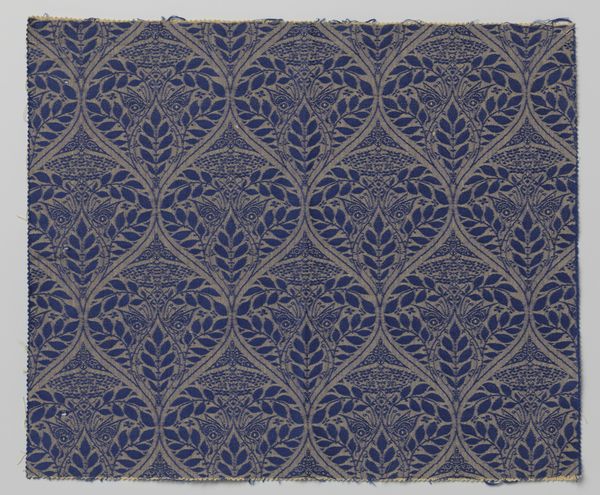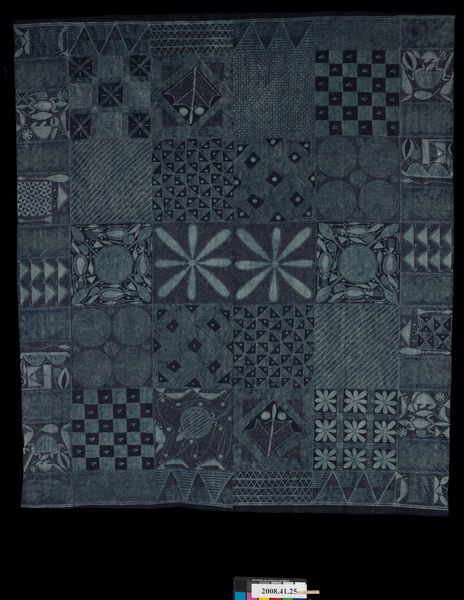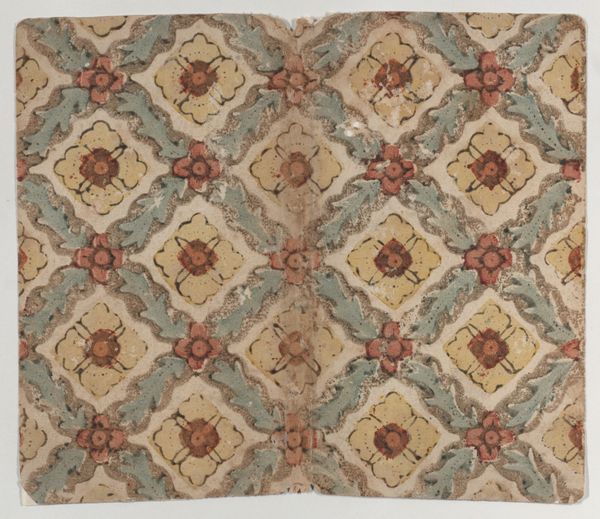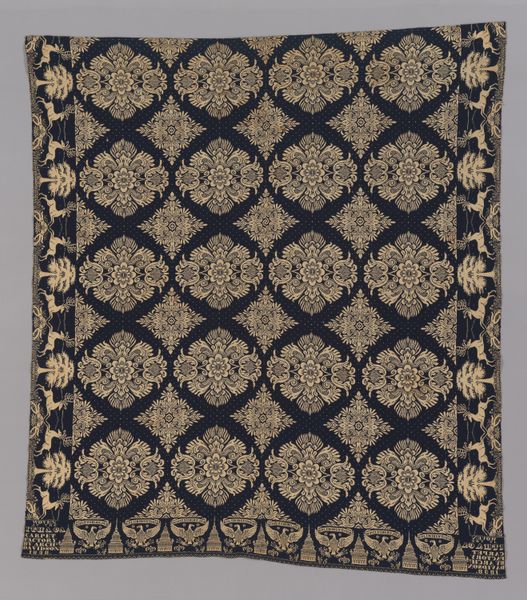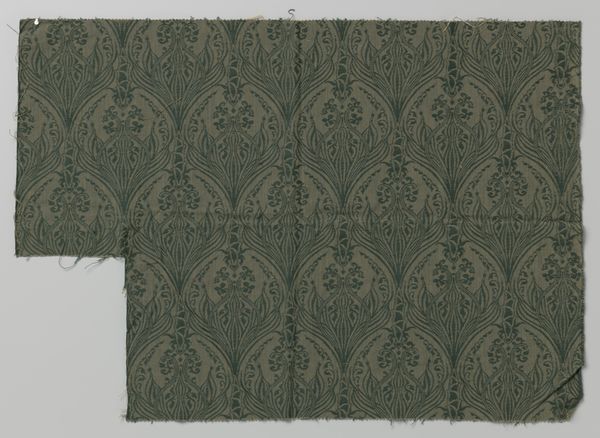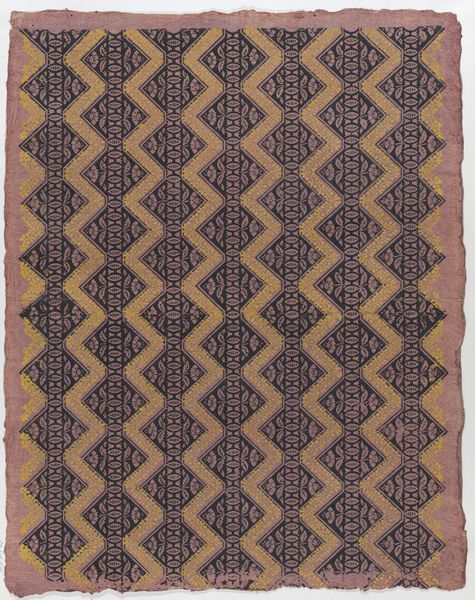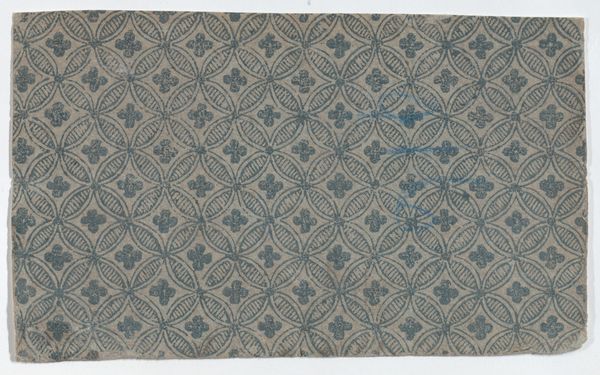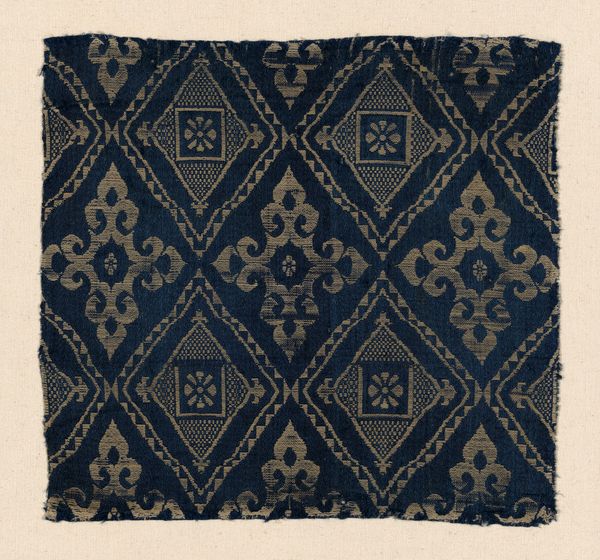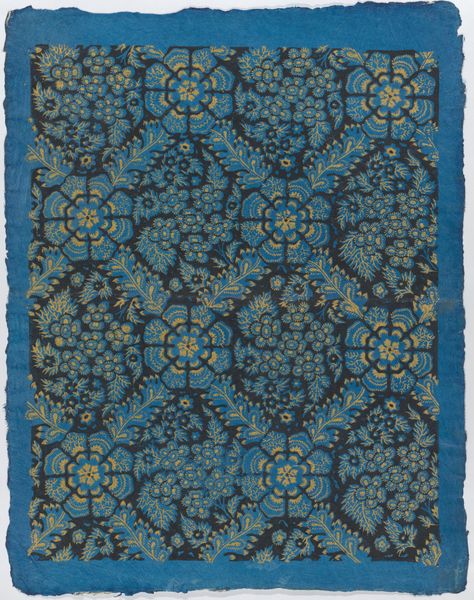
weaving, textile
#
pattern
#
weaving
#
textile
#
geometric
#
pattern repetition
#
islamic-art
Dimensions: 23.5 × 29.4 cm (9 1/4 × 11 1/2 in.) Repeat: 15.7 × 12.7 cm (6 1/4 × 5 in.)
Copyright: Public Domain
This textile fragment, of unknown origin, presents a compelling example of pattern-making through weaving. It is made of woven silk, and the designs are created by the way the warp and weft threads interlock. Look closely, and you’ll see the grid structure, punctuated by floral motifs. The squares, filled with geometric shapes, are likely the result of a complex loom setup, perhaps a drawloom, which allows for intricate designs to be woven. This labour-intensive process highlights the value placed on textiles as status symbols. The material itself, silk, speaks to trade routes and cultural exchange. Silk production was a highly skilled, painstaking process, and the fabric was seen as an item of luxury, not just utility. When we look at textiles like this, we can appreciate the immense amount of human effort required to create them. And this challenges our contemporary separations between art, craft, and design.
Comments
No comments
Be the first to comment and join the conversation on the ultimate creative platform.

